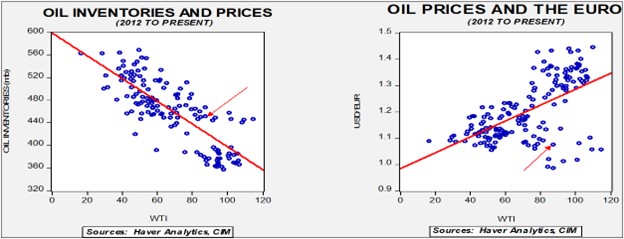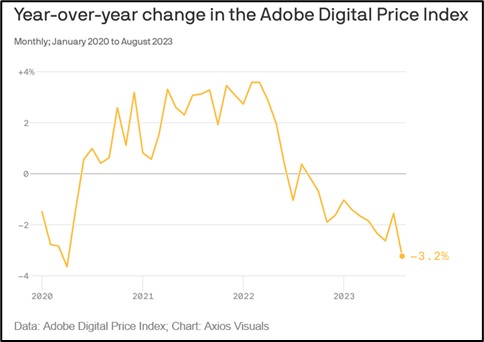by Patrick Fearon-Hernandez, CFA, and Thomas Wash
[Posted: 9:30 AM EDT] | PDF
Our Comment today opens with the evolving relationship between the European Union and China. We next review a range of other international and U.S. developments with the potential to affect the financial markets today, including a short military operation in the Caucasus country of Azerbaijan that has apparently thwarted ethnic-Armenian separatists who had been supported by Russia, and a preview of the Federal Reserve’s interest-rate decision today.
China-European Union: Jens Eskelund, president of the EU Chamber of Commerce in China, issued a statement defending the European Commission’s decision last week to launch an anti-subsidy investigation into China’s exports of electric vehicles. Because of the past experience when the EU’s solar panel industry was decimated by cheap Chinese imports, Eskelund said it should be “understandable” that the EU now wants to prevent the same thing from happening with EVs.
- Eskelund suggested the problem is excess EV manufacturing capacity in China, which the government should address by supporting domestic consumption.
- That’s consistent with the analysis of many economists, including us at Confluence, who believe the Chinese economy is riddled with excess capacity and high debt. In contrast, Chinese consumer spending remains weak, and savings rates are very high.
- All the same, Communist Party ideology and political habits find it difficult to countenance policies aimed at greater consumption and increased consumer choice. President Xi, therefore, is unlikely to give up on China’s export-led, neo-colonialist economic policies anytime soon.
China: While China’s excess capacity in sectors such as EVs and residential real estate is widely recognized, the country also has a lot of excess office space. Recent data shows office vacancies in 18 major Chinese cities reached almost 24.0% in June, even worse than the U.S. vacancy rate of 18.2%. The difference is that China’s excess office space simply reflects massive over-building by developers and tepid uptake as economic growth slows. The U.S. problem is more tied to the rapid shift toward employees working from home following the coronavirus pandemic.
European Union: EU lawmakers this week will start negotiating over the final text of their proposed “Platform Work Directive,” a law that would designate gig workers as de facto employees. In response, officials from ride-hailing giant Uber (UBER, $47.59) warned that if the law isn’t sufficiently flexible, it would force the company to pull out of many smaller cities in Europe and raise prices as much as 40%.
France: The Rassemblement National Party, led by right-wing populist Marine Le Pen, announced that it has paid back the remaining 6 million euros ($6.4 million) or so that it owed to a Russian company. The loan has been a political liability for the party since it was taken out in 2014, as it has raised concern that the party was under the influence of Russia and President Putin. Paying off the loan, therefore, puts the party in a better position to contest future elections, especially as right-wing sentiment grows throughout Europe.
United Kingdom: The August consumer price index was up 6.7% from the same month one year earlier, much better than the expected increase of 7.0% and down from 6.8% in July. The August “core” CPI—which in the U.K. excludes food, energy, alcohol, and tobacco—was up just 6.2% year-over-year, beating expectations that it would be up 6.9%, just as it was in the year ended in July.
- The better-than-expected figures have boosted hopes that the Bank of England can pause its interest-rate hikes at its next policy meeting on Thursday.
- In turn, that has driven down British bond yields today, with the yield on the two-year Gilt falling to 4.84%.
- That has given a boost to interest-sensitive sectors of the country’s stock market today, such as homebuilders and real estate firms.
- The drop in bond yields has also driven down the attractiveness of the pound (GBP). At this writing, the GBP is trading at $1.2379, down about 0.1% for the day.
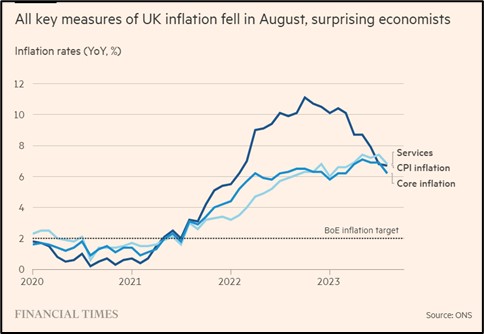
Russia-Ukraine War: Two weeks after Ukrainian President Zelensky fired his former defense minister for corruption, the government sacked six deputy defense ministers who were apparently involved in the scandal. The effort to clean house suggests Zelensky is intent on presenting the Ukrainian government in the best possible light as he works to maintain foreign military support from the U.S. and other allies and keep up domestic political support at home.
Azerbaijan-Armenia: The former Soviet republic of Azerbaijan yesterday launched what it called “anti-terrorist” military strikes in its breakaway region of Nagorno-Karabakh, where the largely ethnic-Armenian population has long worked to join neighboring Armenia. The strikes follow several weeks in which Azerbaijan carried out a military buildup on the region’s borders and imposed a blockade apparently aimed at forcing ethnic Armenians out. With the Armenians’ Russian supporters distracted by the war in Ukraine, reports this morning say they have already capitulated, likely setting the stage for Nagorno-Karabakh to be re-integrated into Azerbaijan.
- In international political terms, Russia’s unwillingness or inability to protect the Armenians is a further blow to Moscow’s prestige and influence. That will also likely push the country of Armenia closer into the embrace of the U.S.
- The outcome is also probably a positive for Turkey, which has longstanding disputes with the Armenians and has supported Azerbaijan.
U.S. Monetary Policy: The Federal Reserve will wrap up its latest policy meeting today, with its decision on interest rates due at 2:00 PM EDT. The officials are widely expected to hold the benchmark fed funds rate steady at its current range of 5.25% to 5.50%. The question is whether they’ll provide any guidance on future policy changes. Many investors continue to look for rate cuts in the coming months, but we think they’ll be disappointed. We think the Fed will try to keep policy tight for an extended period to make sure consumer price inflation is dead.
- As investors increasingly come around to the idea that the Fed will likely keep rates higher for longer, they continue to sell longer-maturity obligations.
- The yield on the benchmark 10-year Treasury note yesterday closed at 4.366%, reaching its highest level since 2007. The yield on the two-year Treasury rose to 5.109%, for its highest level since 2006.
U.S. Regulatory Policy: Ahead of a new zero-emissions rule in California for commercial trucks that kicks in January 1, truckers are accelerating their shift to electric trucks and stocking up on diesel rigs they soon won’t be able to buy. Since California’s market is so large, the buying activity could spur a noticeable increase in the national demand for electric trucks, charging stations, and even diesel rigs.
- Specifically, the rule will require that trucks purchased in 2024 and later can serve the state’s ports only if they are zero-emission vehicles.
- Diesel rigs won’t be able to serve California ports at all starting in 2035.



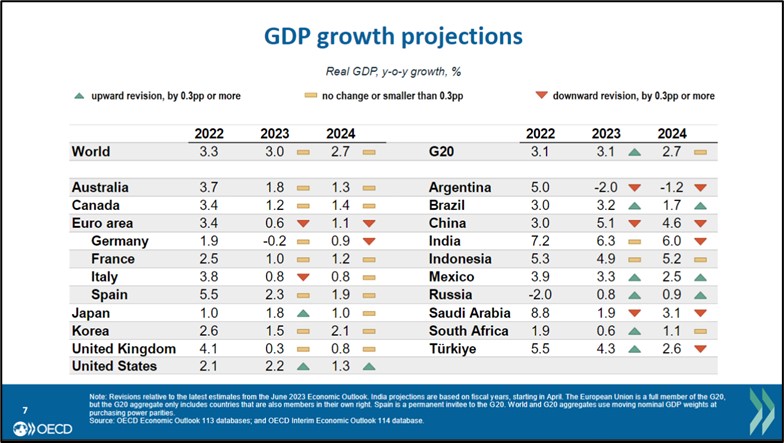
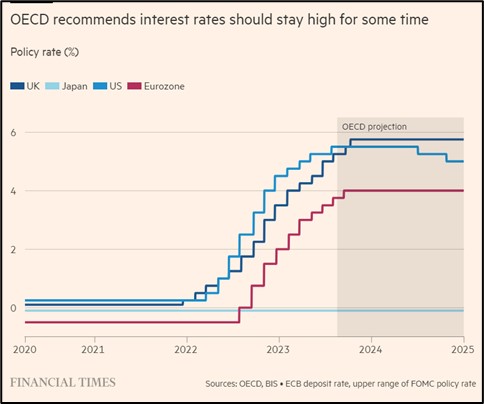
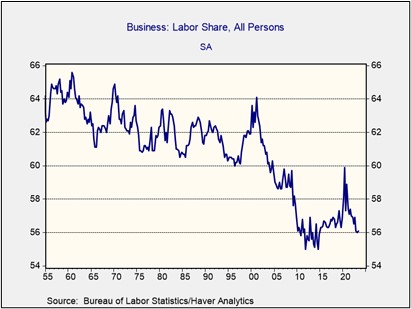
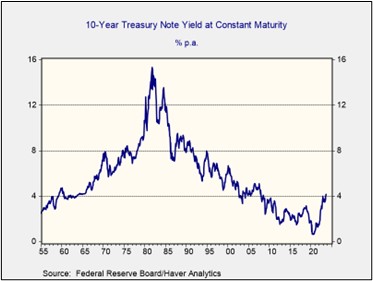
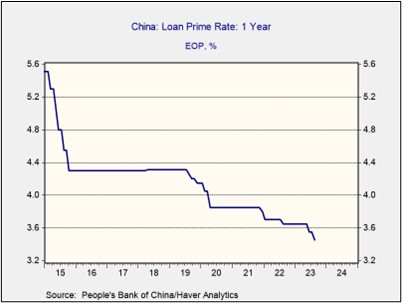
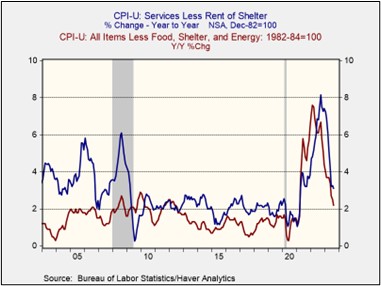
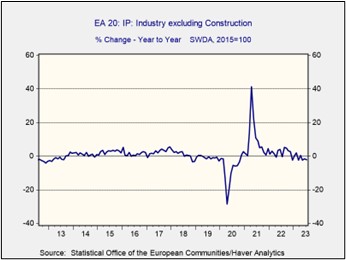
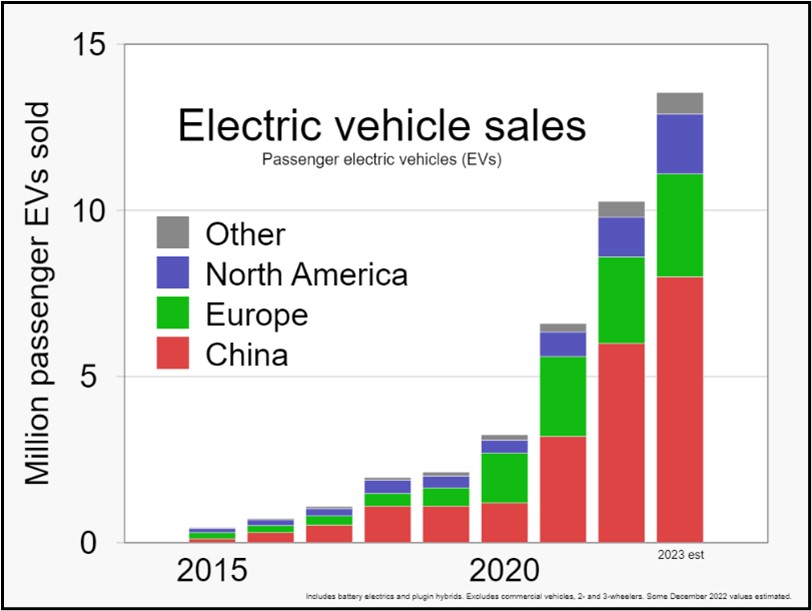 (Source: Wikimedia Commons)
(Source: Wikimedia Commons)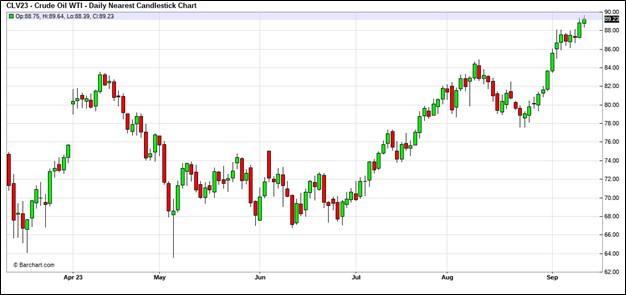 (Source: Barchart.com)
(Source: Barchart.com)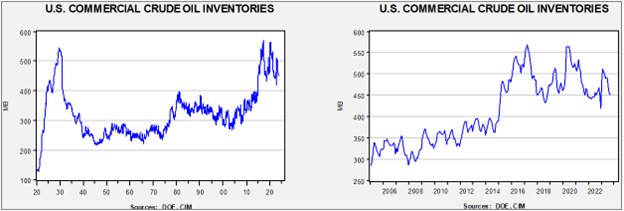
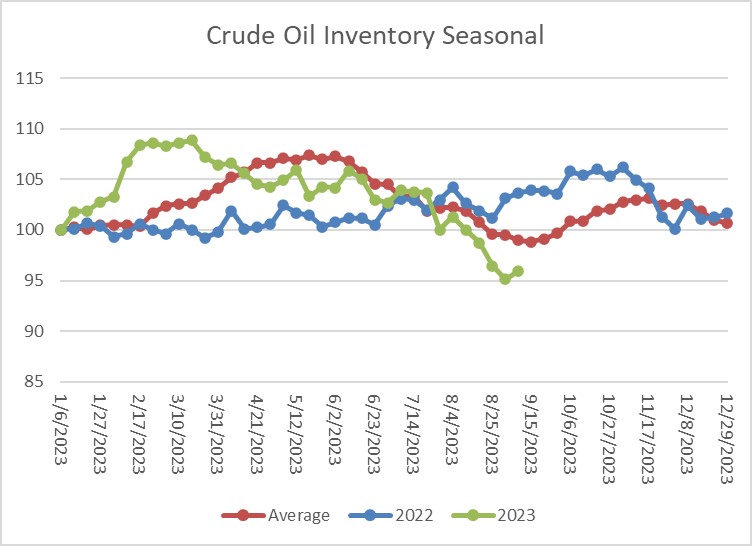 (Sources: DOE, CIM)
(Sources: DOE, CIM)